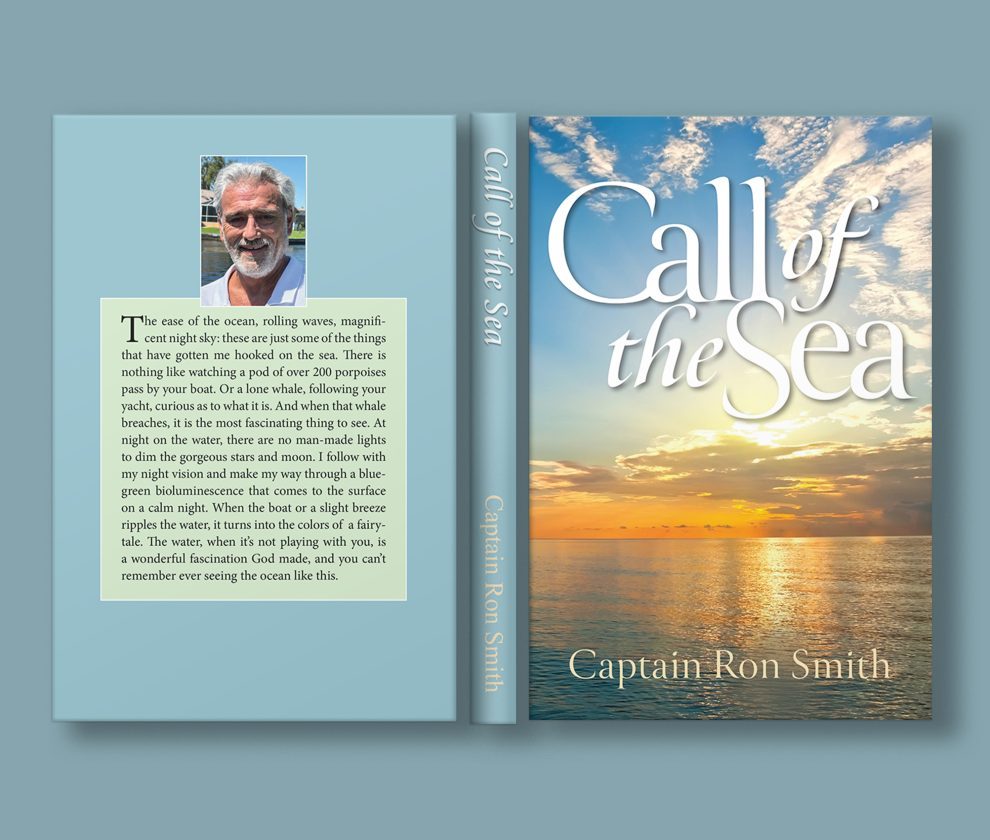In Captain Ron Smith’s memoir, “Call of the Sea”, the profound connection between a man and the ocean is explored through personal adventures and the challenging realities of life at sea. As much as it is an ocean adventure autobiography, the book delves into two key themes that are central to the human experience: nature and resilience.
Nature’s Immense Power
One of the most striking aspects of “Call of the Sea” is its portrayal of the ocean’s vastness and raw power. The ocean is not just a backdrop for the adventures that Captain Ron Smith undertakes; it is a central character in the narrative, influencing every decision and shaping every experience. The sea’s beauty, unpredictability, and force are captured vividly throughout the memoir, giving readers a front-row seat to the unpredictable nature of life on the water.
From the calm, tranquil mornings with the sun rising over the horizon to the sudden storms that roll in and threaten everything in their path, Captain Ron’s journey reflects how nature can be both gentle and unforgiving. In one chapter, he recounts crossing the Florida Straits, a notoriously tricky stretch of water, where the wind and currents can quickly turn favorable conditions into a nightmare. These moments remind us how nature, while stunning and majestic, can also be a formidable force that requires respect and understanding.
Captain Ron’s many voyages—whether navigating through foggy waters, weathering storms at sea, or maneuvering yachts through rocky passages—serve as metaphors for how humans must adapt to nature’s rhythms. The ocean does not bend to human will; instead, the sailor must learn to flow with it, respect it, and respond to it. Through Captain Ron’s stories, readers gain insight into the natural forces that shape maritime life and come to understand that the ocean isn’t just something to be conquered—it’s something to be respected.
The Resilience of the Human Spirit
Throughout “Call of the Sea”, Captain Ron Smith demonstrates how resilience is key to surviving on the open ocean. It’s not just about navigating a boat through rough seas; it’s about the ability to adapt, persevere, and maintain composure in the face of adversity. The ocean constantly tests the limits of human endurance, and Captain Ron’s life as a boat captain exemplifies the unwavering resilience needed to succeed.
Whether dealing with the mechanical breakdowns that threaten to leave him stranded or facing the exhausting physical demands of delivering yachts over long distances, Ron’s resilience shines through. His real-life sea stories illustrate how overcoming obstacles at sea requires a mental and emotional toughness, as well as the ability to problem-solve quickly in the face of danger.
Captain Ron’s personal growth and transformation throughout the book are symbolic of resilience itself. As he evolves from a novice sailor to a seasoned captain, he learns to harness his inner strength, adapt to unexpected challenges, and continue to navigate life’s tumultuous waters. His resilience isn’t just about enduring hardships—it’s about learning to thrive in spite of them.
In many ways, Captain Ron’s journey mirrors life itself, where the challenges we face—whether on the water or in our personal lives—are opportunities for growth. “Call of the Sea” explores how resilience is not just about surviving nature’s toughest conditions but also about using those experiences to shape a stronger, more capable version of oneself.
Nature and Resilience: A Symbiotic Relationship
The relationship between nature and resilience in “Call of the Sea” is not just about human survival—it’s about harmony. Captain Ron’s journey isn’t about fighting against the sea, but about learning to coexist with it. The ocean provides both challenge and solace, and Ron’s ability to navigate it successfully is rooted in his resilience to the ever-changing natural world.
In fact, it is nature’s power that drives his resilience. Every storm he faces, every journey across the open ocean, and every obstacle encountered requires him to dig deep within himself. Whether it’s adjusting to the sea’s unpredictable moods or overcoming mechanical failures in the middle of nowhere, Ron’s ability to persist is a direct result of the lessons nature teaches him.
This nature and resilience dynamic is a central theme in maritime life. Just as the ocean is never the same from one day to the next, human beings must adapt and be resilient in the face of changing circumstances. “Call of the Sea” reflects this dance between man and nature, where each wave, gust of wind, and storm teaches the captain not only how to navigate the water but also how to navigate life itself.
The Call to Conquer and Coexist with Nature
Ultimately, “Call of the Sea” is a tribute to both nature’s ability to inspire awe and humanity’s resilience to rise above challenges. Captain Ron Smith’s account of life on the water is a powerful exploration of how nature, in all its glory and ferocity, can both humble and empower. It’s a reminder that while we cannot control nature, we can learn to coexist with it, respect its power, and build the resilience needed to thrive. In reading “Call of the Sea”, readers are invited to reflect on their own resilience in the face of life’s unpredictable challenges. Much like Captain Ron Smith, we all must find ways to adapt, persevere, and grow stronger, no matter how turbulent the journey may be.

